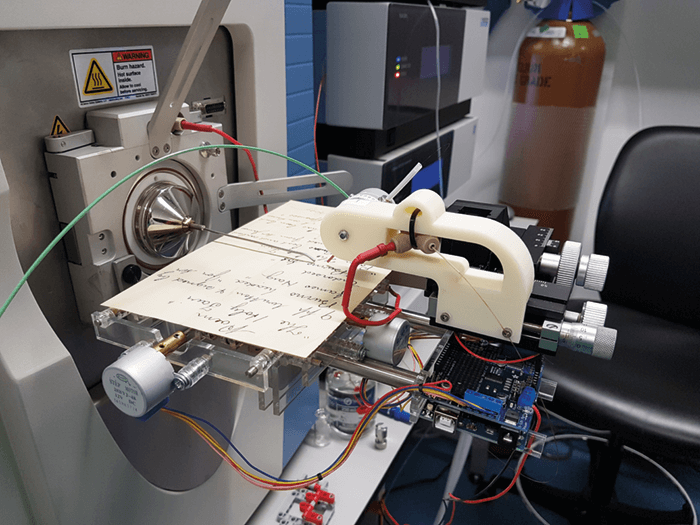A team from the University of Glasgow, UK, performed a chemical analysis on documents purportedly written by Scottish poet, Robert Burns – and developed a method to identify the genuine manuscripts. Comparison of the ink spectra using HRMS allowed them to create an authenticity map to distinguish the authentic versions – but not without a few analytical (and practical) issues along the way. The project was the result of a multidisciplinary collaboration between Karl Burgess (Head of Metabolomics) and Gerry Carruthers (Professor of Scottish Literature and a Burns expert). “Gerry was looking for someone who could use a chemical analysis technique to distinguish real from faked Burns manuscripts, and my PhD student recommended me,” says Burgess. “At the same time, I was trying to recruit someone to do surface analysis mass spectrometry, and James Newton came on board. The rest is history!”
They started off with DESI-MS. “James spent his first year building a robotically controlled DESI (desorption electrospray ionization) source, optimizing it, and faking Burns documents to provide samples that we could test to destruction. DESI turned out to be relatively insensitive, and we would have had to fold the documents up to fit them onto the source,” says Burgess. Liquid extraction surface analysis (LESA) also required them to fold the documents, but the quality of the spectra convinced the team to find a workaround. “We ended up using manual LESA, pipetting a couple of microliters of solvent onto the document by hand before transferring it to the Advion NanoMate for direct infusion mass spectrometry (DIMS),” says Burgess. This simple method meant they were able to take a bottle of solvent, some tips, a pipette and a bag of tubes to a library or collection, and sample documents on site.
The first problem they encountered, Burgess says, ultimately had one of the best outcomes of the project. “We wanted a positive control for the inks and we mentioned this to our collector–collaborator, who brought us a hand-written book from the 17th century, describing the production of lots of liquids – including inks (as well as carbonized ivory, stale beer and wasp galls),” he says. “James then used the recipes to make the inks.”
Now they have a working method, the team want to build a database of hundreds of documents, so that they can put other authors’ works into context.

References
- J Newton et al., “Minimally destructive atmospheric ionization mass spectrometry authenticates authorship of historical manuscripts”, Sci Rep, 8, 10944 (2018). DOI:10.1038/s41598-018-28810-2.




